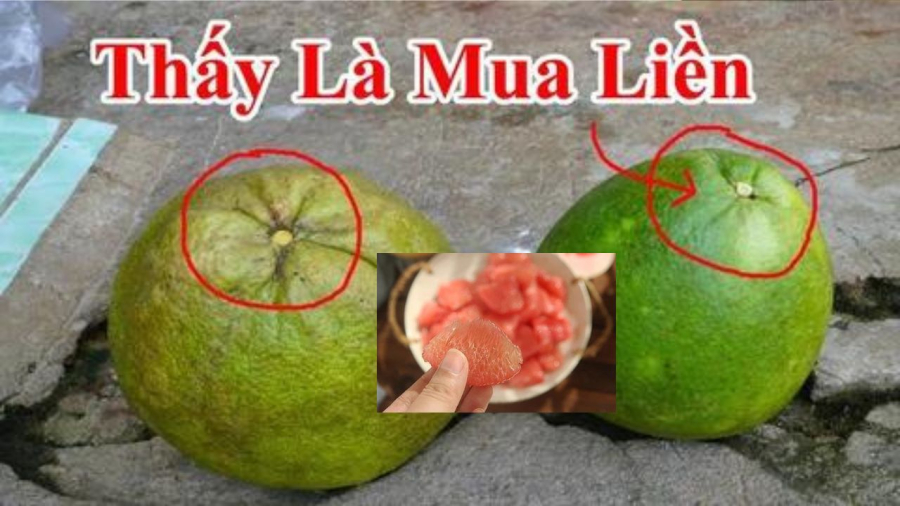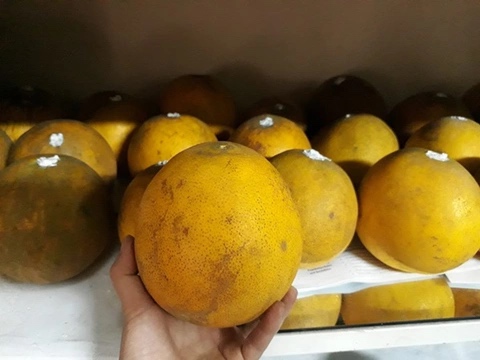1. Observing the Pomelo’s Skin

Tips for Choosing a Delicious Pomelo
Inexperienced buyers often gravitate towards pomelos with shiny, smooth skins. However, according to Le Van Loc, owner of a popular YouTube channel on fruit-picking tips, if you want to select a tasty pomelo, you should do the opposite.
Instead of choosing a pomelo with a pristine skin, opt for those with rough, even bumpy, skins. These pomelos tend to have thicker skins and are fully ripe. If the area near the stem is raised, it indicates a particularly juicy pomelo.
Pomelos with perfect skins are better suited for decorative purposes or as offerings; their value for consumption is not as high.
2. Press the Stem
Nowadays, pomelos sold in markets, stores, and supermarkets usually have their stems removed. However, you can still assess the freshness and ripeness of the fruit.
Look at the broken stem area and press it gently. If it feels soft and you can indent it, the pomelo is ripe and ready to eat. If it feels hard and unyielding, the pomelo is unripe. If the stem is off-center, it’s best to avoid that pomelo as it is likely low quality and was harvested too early.
3. Weigh the Pomelo
A simple way to increase your chances of selecting a juicy pomelo is to compare their weights. Hold one pomelo in each hand and see which feels heavier. The heavier one is likely to be juicier and less dry.
Depending on your preferences, intended use, and family’s tastes, you can use these tips to choose the best pomelos.
How to Store Pomelos to Stay Fresh for 2-3 Months
To prevent pomelos from over-ripening and becoming dry and unappetizing, there are a few simple steps you can take when you first buy them. With these methods, you can keep pomelos fresh for 2-3 months without refrigeration.

A bumpy, raised skin near the stem indicates a thick-skinned, juicy pomelo.
First, apply lime (calcium oxide) to the stem. Clean the pomelo, cut off the remaining stem (if any), and apply a small amount of lime to that area. Then, store the pomelo in a cool, dry place, away from direct sunlight and moisture.
Lime has antibacterial properties and helps prevent the pomelo from spoiling. This method is commonly used by pomelo growers and families who grow pomelo trees for long-term storage.
Another method is to use dry sand. Filling a container or bag with dry sand and placing the pomelos inside will help absorb moisture, keeping the pomelos fresh for up to 4-6 months without mold or rot. Check the sand weekly and replace it if it becomes damp.
The above methods are for whole pomelos. For peeled or segmented pomelos, it’s best to store them in separate airtight containers or bags, and they should be consumed within 2-3 days. Refrigeration is not recommended for extended periods as it can affect the quality and juiciness of the fruit.































